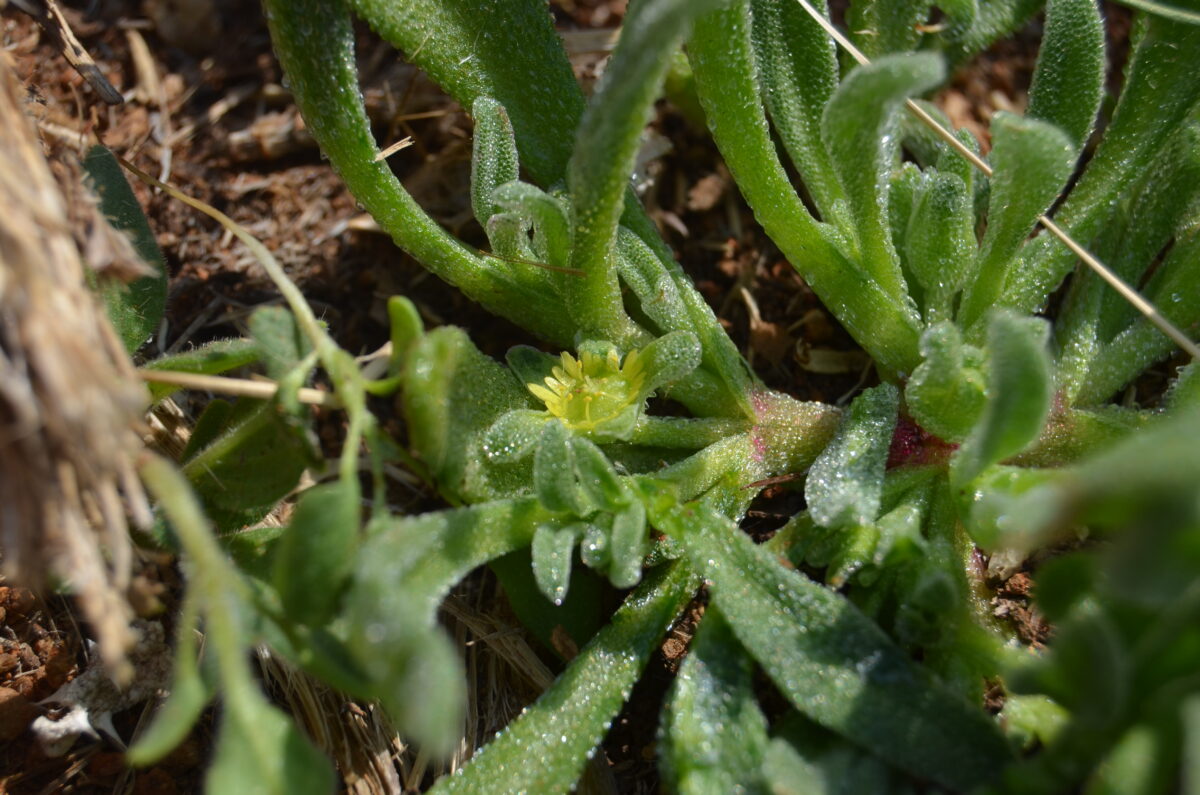JRS grantee Namibian Chamber of Environment (NCE) kicked off their activities with a field trip to survey several sites in southern Namibia. We are excited to share that during their survey, NCE documented a new species record for Namibia! Cleretum papulosum subsp. papulosum had been previously known only from South Africa, but it was found near the town of Aus. The team was also pleased that they secured photos and specimens of the rare Zaluzianskya diandra.

Another highlight was finding the lovely Polygala ephedroides in flower.

Only a single record from 1989 exists for Namibia – likely from the same site where it was found. Several plants look very similar to Sisyndite spartea and probably therefore get overlooked. Unfortunately only Zaluzianskya qualifies for our near-endemics list with the larger part of its range in Namibia.
Project PI Herta Kolberg was joined by Sofia Amakali, Leevi Nanyeni and Tyrone Tholkes on this survey and were delighted to share a first hand description of the experience from Sofia Amakali:
On the 29th August 2023, we embarked on a first field trip to the South. The duration of the trip was 11 days and was based at Aus and Farm Tiras. Preparation included identifying the gaps that exist between the available images and the ones needed. This trip aimed to fill these gaps by obtaining these images. During preparations my responsibilities included updating the slides inventory obtained from the National Botanical Research Institute (NBRI), scanning the slides and analyzing which photos we had and the ones we still needed to get. In addition to this, Herta went through Herbarium specimens and other past records to determine the potential localities (Quarter Degree Squares) of the target species. We used this information as a guide during the field trip. We had a total of 248 species that we needed to get photos of.
We worked in areas around Aus, such as Klein Aus Vista, Dikwillem, Haalenberge, then Lüderitz and Lorelei Mine (Rosh Pinah), which had received good rain and there were plenty of flowers in bloom. In each area, we had to identify the plants, took lots of photos, and collected and pressed voucher specimens for almost, if not all, the plants on which the identifications were based. Most areas around Farm Tiras were quite dry and had not received as much winter rain, however, we still managed to find some species we were looking for, from there.
I would confidently say that this trip was a great opportunity to learn and add onto my experience in the field, as well as continue my journey to make an impactful contribution towards the success and progress of this project, as an aspiring young botanist. Working alongside Herta, a renowned expert in the field of Namibian botany, on this field trip was definitely a great experience for me. I learnt quite a lot, including how to go about making correct identifications in the field, what important characteristics to observe, plant pressing and so forth. We also had such intriguing discussions on genetic diversity and the right procedures for seed collection. Herta would often acknowledge the hard work we put in, and praise my efforts, which further motivates me to keep doing my best. I feel honoured to have been and to still be working alongside her on this project, as I believe I still have so much to learn from her expertise.
Read more about the Namibian Chamber of Environment JRS grant here.

